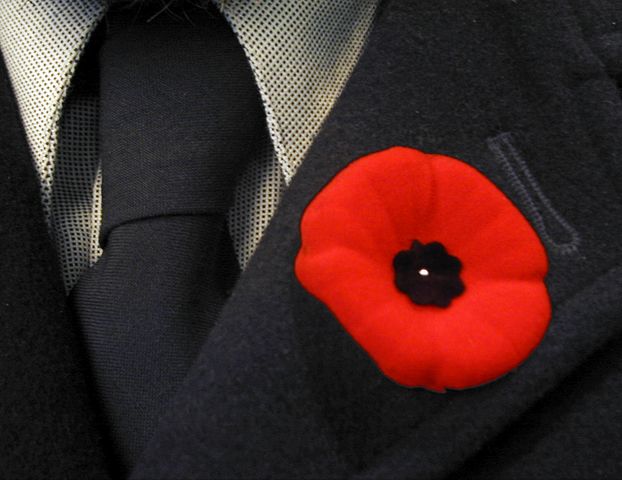DCHP-2
poppy DCHP-2 (July 2016)
n. — originally Military, now widespread
a commemorative red pin made to resemble a poppy and worn around Remembrance Day.
Type: 4. Culturally Significant — Poppy and poppy pins are used throughout the British Commonwealth and in many other nations that participated in WWI. In Canada, however, their significance is unique. In addition to commemorating those who fell in combat (in more recent years, all victims of war), a Canadian indirectly spurred the tradition of wearing poppies. According to the government website for Veterans Affairs Canada, the poppy campaign, spearheaded by a Frenchwoman, was inspired directly by the famous war poem "In Flanders Fields" by Ontario native John McCrae, the first line of which is: "In Flanders Fields the poppies blow" (see Veterans Affairs Canada, s.v. "The Poppy"). The poppy has thus acquired a two-fold significance in Canada: one of remembrance and one of cultural heritage. Cultural significance of events surrounding some WWI battles is beyond dispute by historians, as Canadian battalions played important roles, which in the wake of WWI led to Canada taking cautious steps towards full independence from Britain.
The 2001 $10 bank note features both poppies (besides a maple leaf) and an excerpt of McCrae's poem on the back side.
COD-2, s.v. "poppy" (2), lists the meaning but does not label it in any way.See also: Remembrance Day Poppy Day
References:
Images:

Image 1: A poppy pinned to a lapel. Source: Wikimedia Commons. Photo: hobvias sudoneighm